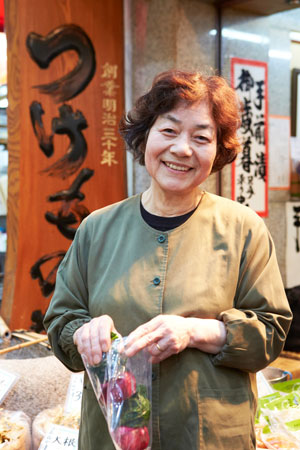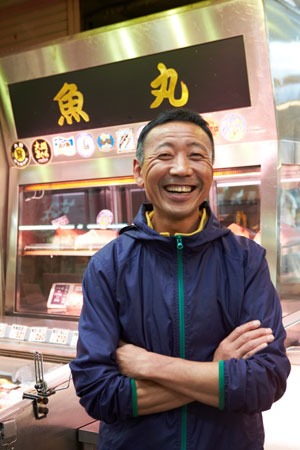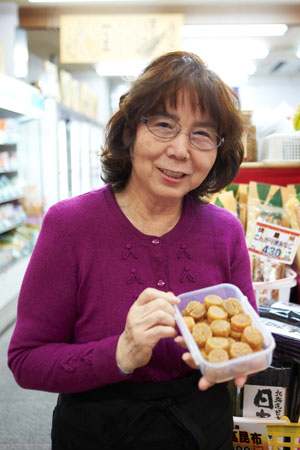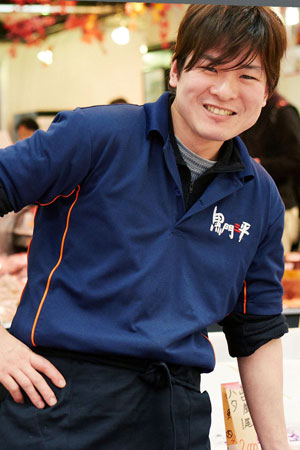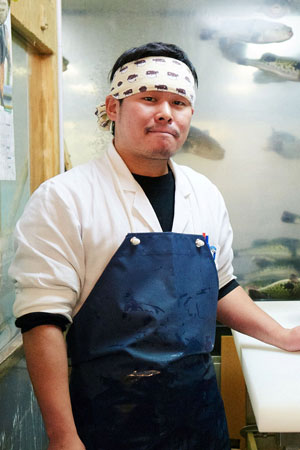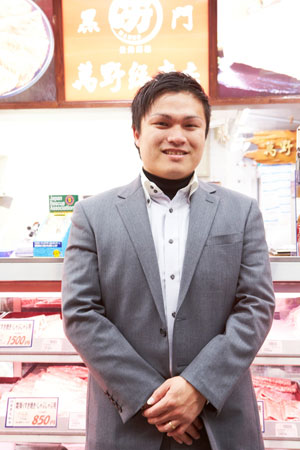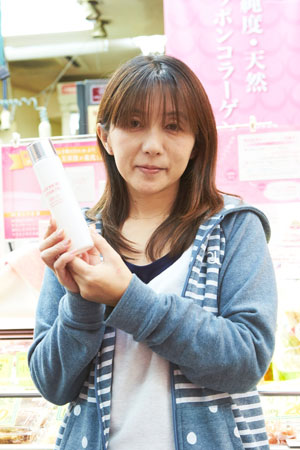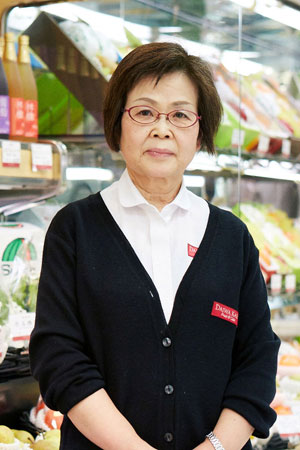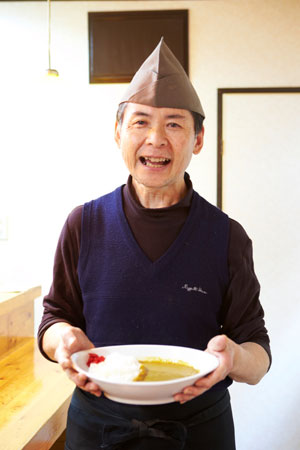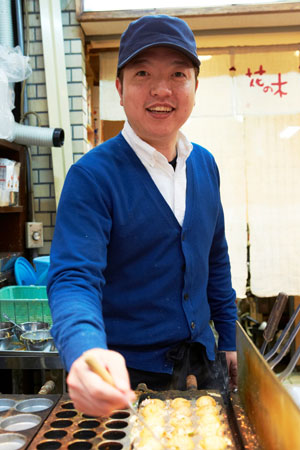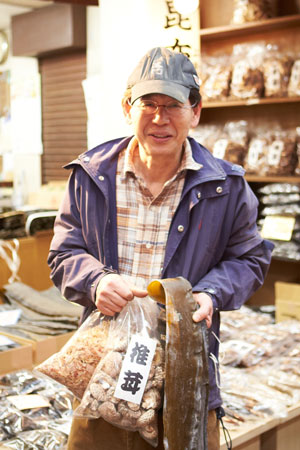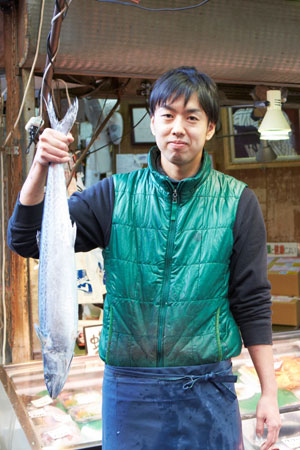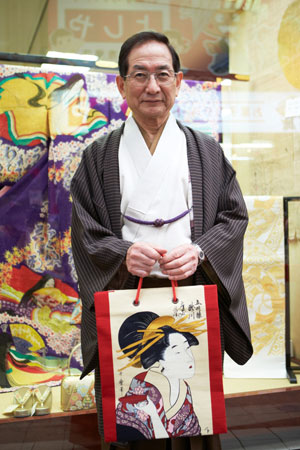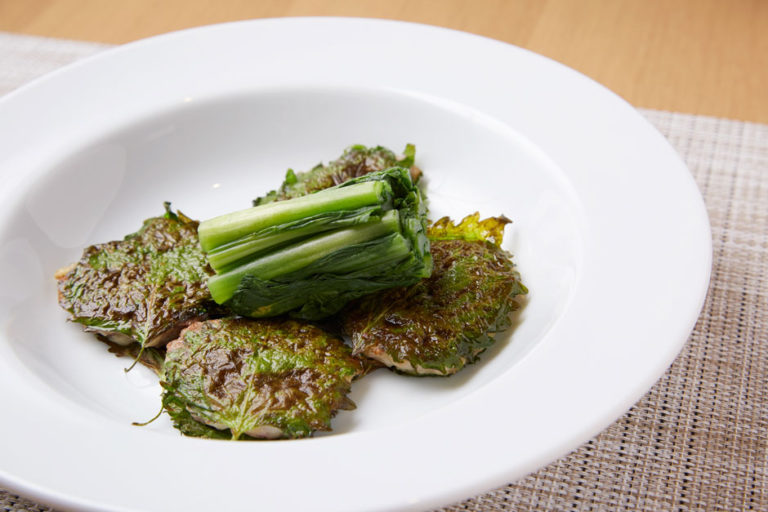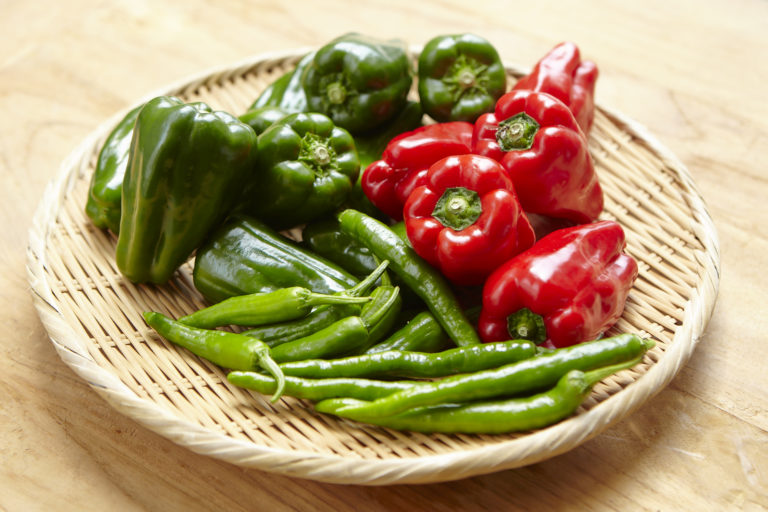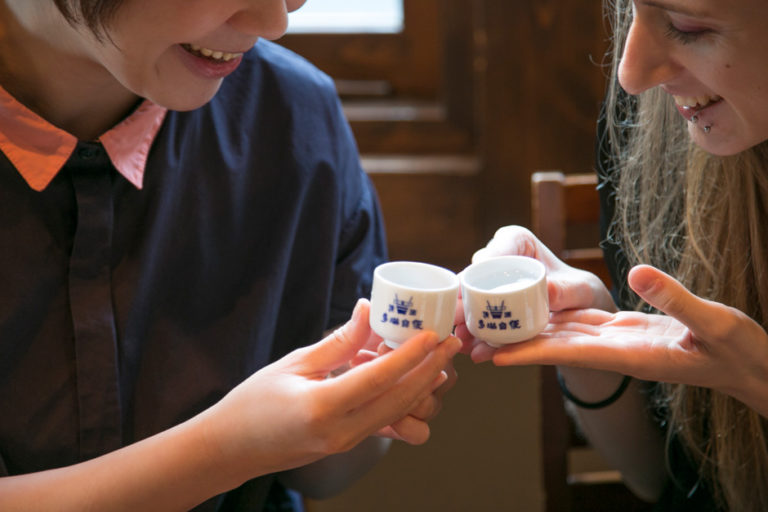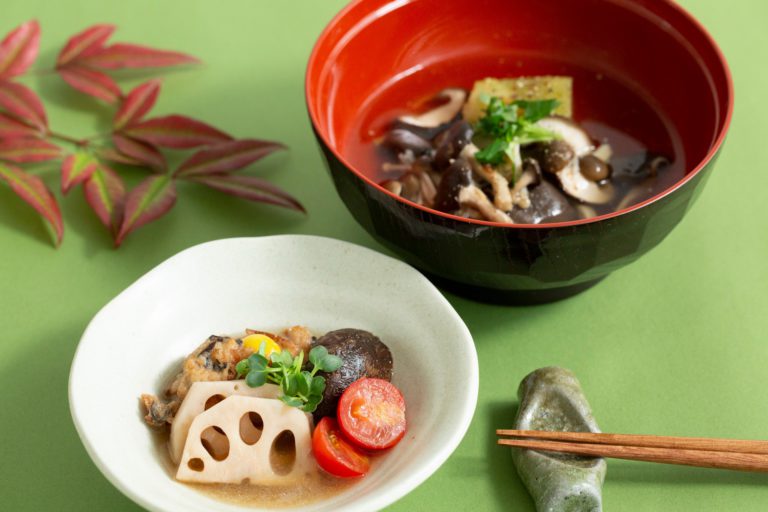Kuromon Market, the Embodiment of the “Nation’s Kitchen”
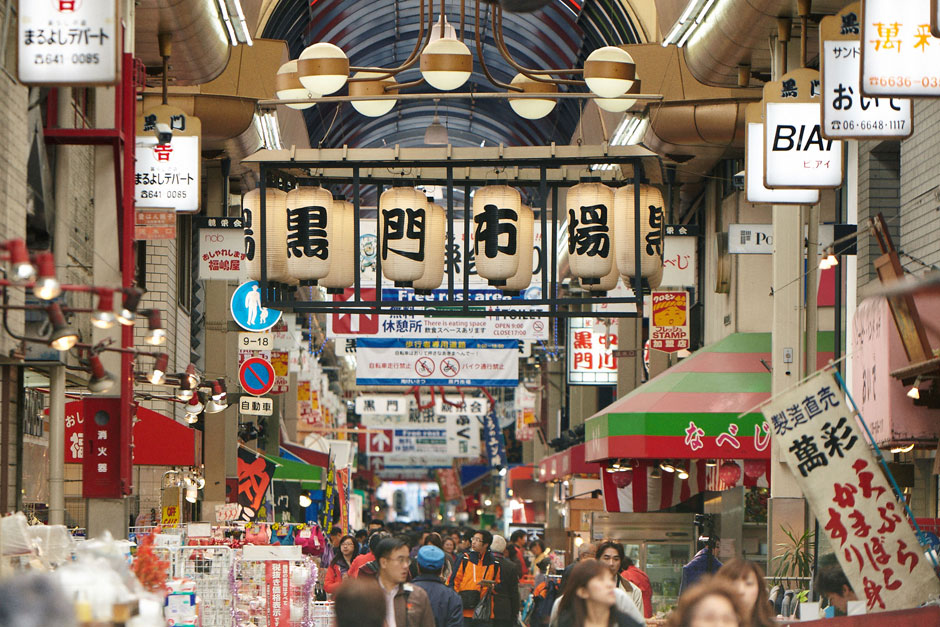
The Kuromon Market is a busy place that prospered as the center of “nation’s kitchen” for many years. Kuromon, which literally means “black gate,” was originally a fish market that opened around 1822 (and was approved as an official market in 1902). The name is said to have come from the black gate of Enmyo Temple, which stood in this area until 1912, the last year of the Meiji Period.
Over 150 shops line the streets of the Kuromon Market, selling everything from fresh fish, produce, meats, to kimonos and household goods. It is a place where shoppers can purchase the superior quality honma mon (in the Osaka dialect it means “the real stuff”). Through word of mouth, the market has become known not only within Japan but also throughout the world as the place to meet real Osaka merchants; and it is now a prime tourist spot for overseas travelers to Japan.
Hamato?Blowfish Restaurant, Nurtured Over the Years by Local Connoisseurs
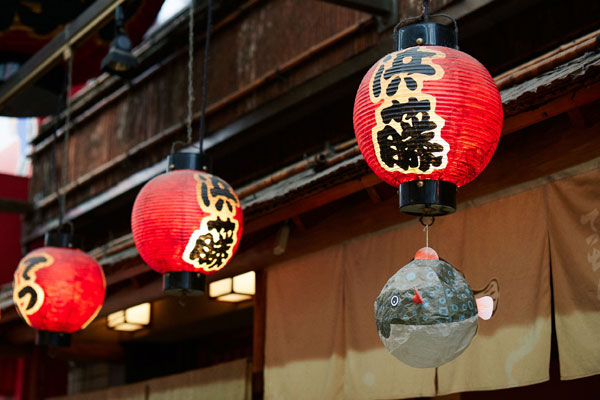
The first place at the Kuromon Market we visited was a long-established blowfish restaurant, Hamato. It was founded more than 90 years ago, originally as a blowfish wholesaler. Later, it was turned into a restaurant by the grandfather of Wajima, the current owner. Here you can enjoy the torafugu (tiger globefish), which is considered one of the highest quality blowfish you can get. What’s more, the restaurant insists on only using blowfish fished in Japan?mainly in Nagasaki Prefecture and Awaji Island?that weigh 1.5 kilograms or more.
Wajima tells us that such a strict insistence on using quality ingredients comes from past owners’ desires for customers to enjoy the highest quality blowfish, which are those that have lean meat and a firm texture, and this tradition continues to this day.
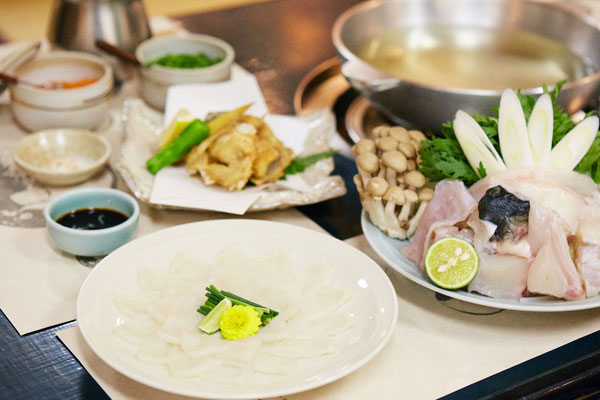
Hamato not only places the utmost importance on the quality of the fish, but the restaurant is also fiercely uncompromising about other ingredients that are used to enhance the flavor of blowfish dishes. The kelp used to make the soup stock is from Rausu, Hokkaido, and the bonito flakes are from Makurazaki, Kagoshima. The ponzu (citrus-seasoned soy sauce) is made at Hamato using a special recipe developed through its many years in business. Customers get to enjoy exceptional blowfish cuisine that can only be found at this restaurant.
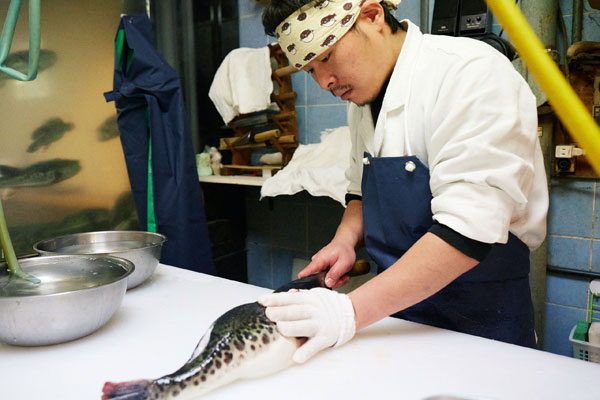
Because it takes specialized skills and knowledge to prepare blowfish, which is extremely poisonous, it is not eaten very much in other countries. Nevertheless, the Kuromon Market has seen an increase in the number of overseas tourists, a majority of which are from other Asian countries. “We have seen more and more people from overseas showing interest in eating blowfish,” says Wajima.
When you are in Osaka?a place where more blowfish is consumed than in any other part of Japan?why not try some of the dishes at Hamato, whose traditional skills and flavors have been developed and perfected over many years with the help of the best local blowfish experts.
To Experience the Market’s Signature Vibrant Energy, Go to Kuromon Sanpei
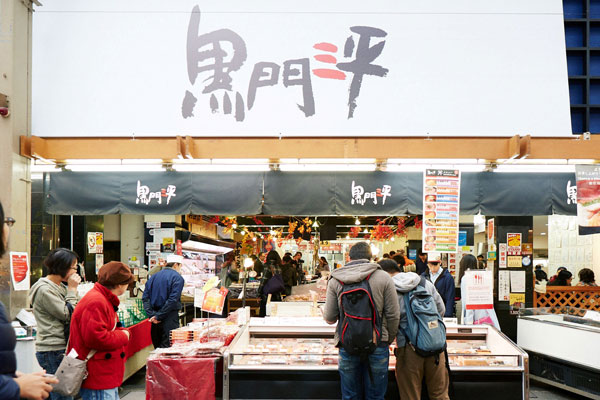
Because the Kuromon Market began as a fish market, there are still many shops here that sell fresh fish. One of them is Kuromon Sanpei, where you can buy a wide variety of fresh fish and many other seafood products.
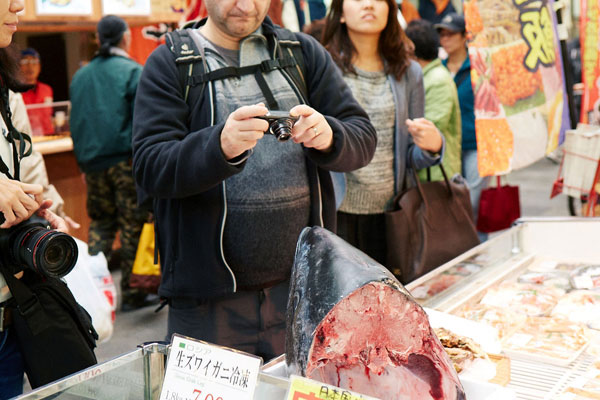
The store, with a floor space that exceeds 150 square meters, is bustling with local chefs and many tourists from Japan and overseas. Arranged in the storefront are many kinds of fresh fish including large Spanish mackerels that measure as long as 70 centimeters, rows of sea urchins still in their spiky shells, and large blocks of blue-fin tuna.
Seeing all of the fresh fish and hearing the lively calls of the sellers to attract customers, visitors of Kuromon Sanpei can enjoy the vibrant energy that can only be experienced in a market like this.

What’s more, Kuromon Sanpai offers visitors a chance to try the fresh fish they sell right there on the spot. This fresh fish is served as sushi or atop rice bowls in a restaurant space within the store. It is a very popular spot even among overseas tourists, and as many as 700 dishes are ordered every day.
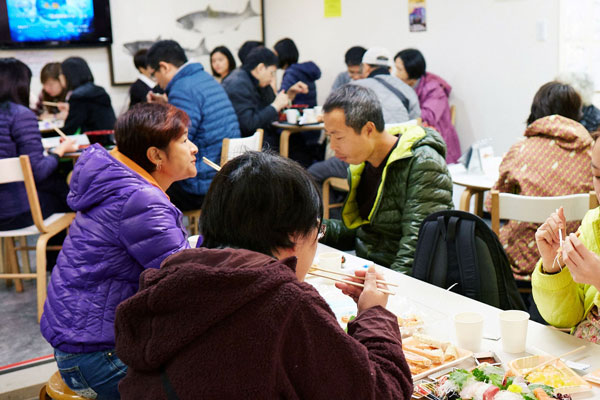
“Not only tourists but also professional chefs visit the Kuromon Market. That’s why we have large fish like the Spanish mackerel on display. However, these fish give our storefront such a dynamic look that tourists really enjoy them, too. Like offering a restaurant space for customers to eat our products, we at Kuromon Sanpei work with the goal of creating ways for our customers to have enjoyable experiences,” says Iwasaki, the director of the store.

The store can be seen as an entertainment spot where fresh fish take the main stage, a place that is pleasing to both the eyes and the palate.
Kuromon Sanpei is a shop that offers the freshest fish from all over Japan and other products of the highest quality that please all types of customers, from tourists from overseas to professional chefs, and is representative of the constantly improving state of the Kuromon Market.
Daiwa Kaen, a Place to Get Seasonal Fruits from Around Japan
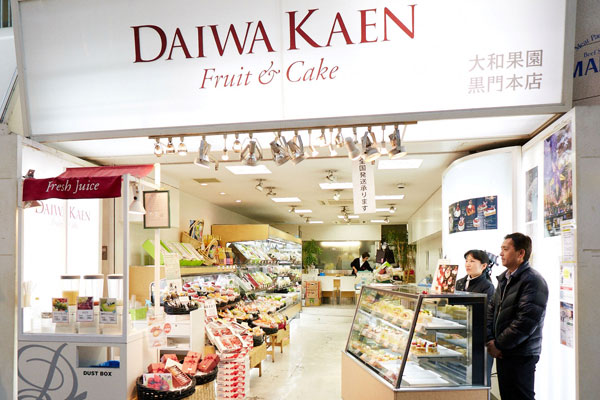
Walking further along the Kuromon Market, we were drawn to the colorful display of fruits and desserts of Daiwa Kaen, a fruit shop that has been in business since 1948.
In the front of the store are fresh seasonal fruits, like a strawberry variety called Amaou, and cakes and other sweets made with fruits that have been carefully selected.
With the exception of a certain period during the wintertime, fresh juices are also available for customers to try right away.
The drinks are packed with refreshing flavors of seasonal ingredients only a fruit specialty store could offer. It is a much-welcomed treat for a tired body that has been walking around the market.
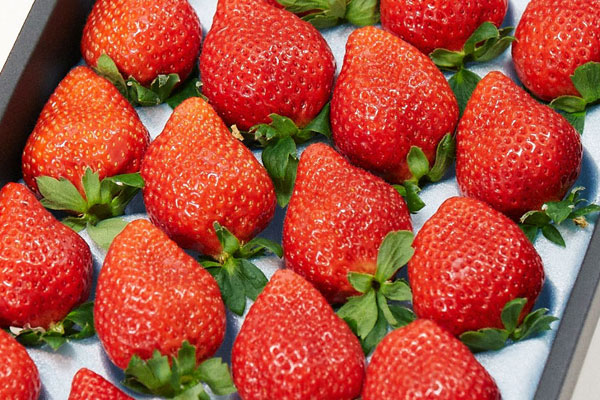
We asked the store manager, Hasegawa, about its seasonal fruits.
“Winter fruits are strawberries, Satsuma oranges, and Dekopon oranges. An unusual item is the whitish pear from Niigata called Le Lectier. We at Daiwa Kaen carefully select and line up the best in-season fruits from all around Japan. Cakes and other sweets are made in our own factory located within the Kuromon Market, so we can offer them freshly-made for our customers to taste and enjoy.”
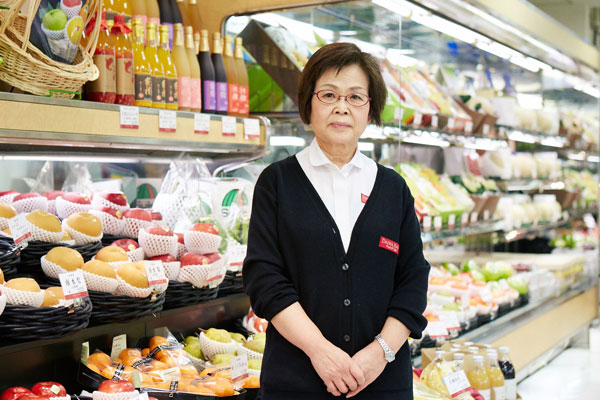
We saw many shoppers stop in their tracks at Daiwa Kaen as they noticed the sweets’ scent and colorful appearances of the seasonal fruits and desserts decorating the storefront.
The Energy of the Kuromon Market Sustained for Over 130 Years
We asked Yamamoto, the director of Kuromon Market Shopping District Promotion Association, how the Kuromon Market has been able to sustain its level of vitality for more than 130 years.
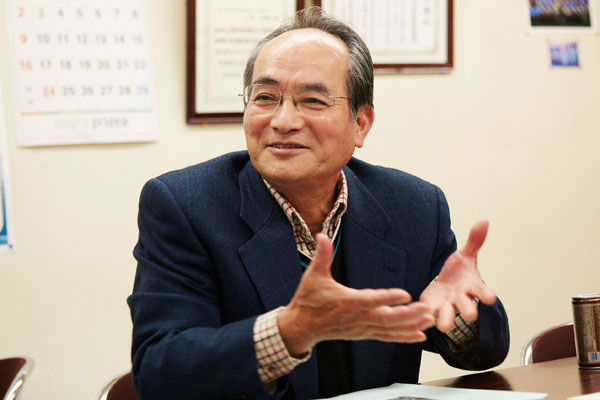
「わたしもここ黒門市場で店を構える漬物屋『伊勢屋』の4代目として産まれて、ここで育ちました。いまは甥っ子が6代目として店を継いでいます。黒門市場がいまも続いている確かで大きな理由は、店が次の後継者に先代たちの想いとともに受け継がれてきているからです」。
While it is important to find ways to encourage customers to visit the market, what is also vital is for the shops and the people who work there to continue to maintain the community. Moreover, as the shops are passed down, the younger generation watches the older generations at work and acquire the notion that, “Wow, the merchant business looks so interesting!” The members of the Kuromon Market have valued their association as well as each other as they continually promote the market as a whole.
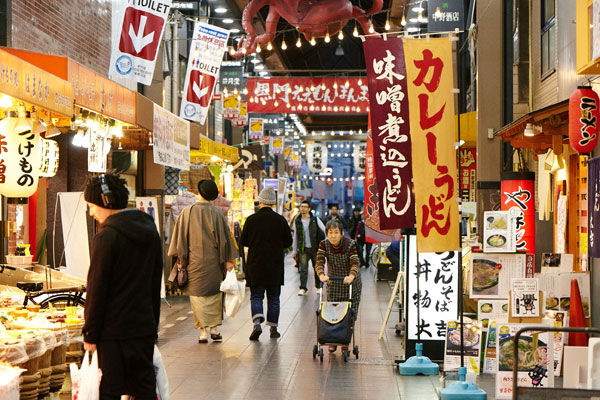
Furthermore, the popularity of this lively market is spreading beyond Japan and is attracting the interest of overseas visitors. In order to make the market a more enjoyable place for such overseas tourists, it is engaging in various efforts such as making tourist maps and street signs in foreign languages, and creating better Wi-Fi availability. Such efforts and the market’s lively and exciting atmosphere have enhanced the sense of satisfaction felt by overseas visitors, making many of them eager to make repeated visits.
Vitality and energies of the locals, chefs, and tourists from around the world are felt everywhere and support the Kuromon Market. Be sure to experience the “nation’s kitchen” for yourself by including the Kuromon Market on your list of must-see places to visit.
Shops at the Kuromon Market
* Shops listed below make up only a portion of the entire market.

